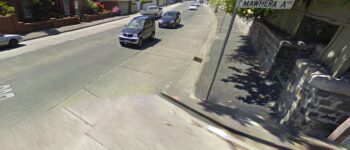1885: New Zealand in Tasmania
November 22, 2021
By AHNZ
 Interested to learn this week that there’s a little bit of New Zealand in Tasmania. In 1867 a young Tasmanian lawyer, William Perkins, came to practice in Greymouth. He did very well, amassing a considerable fortune, then returned home to live in Hobart in 1884.
Interested to learn this week that there’s a little bit of New Zealand in Tasmania. In 1867 a young Tasmanian lawyer, William Perkins, came to practice in Greymouth. He did very well, amassing a considerable fortune, then returned home to live in Hobart in 1884.
These details were turned up by Mary Traynes and reported in the Greymouth Star (20 Nov 2021.) Mary discovered that Perkins’ built a new home and named it ‘Mawhera’ which is the Maori name for Greymouth. Today the house is still there and so is the road named for it: Mawhera Avenue.
“All of William Watchorn Perkins houses are still standing . All his houses had Maori names except Beaufront. Mawhera was the original name for the area around Greymouth in New Zealand. Mawhera was last sold in 2014, and I understand it is being restored to its former glory.” – Sandy Bay Historical Society, Hobart ,Tasmania; Facebook (2019)
Greymouth Star: “And the big question- how do they pronounce Mawhera, in Australia?”
Ann Rickets, Sandy Bay Historical Society, Hobart: “It probably sounds the same as in New Zealand but with a Tasmanian accent! We say ‘Maw weir ra’.” – Greymouth Star, 20 November 2021
That’s very interesting! New Zealanders, at least in recent times, have been coached out of their Kiwi accents. In Aotearoa English we are mandated to say ‘Ma-fear-a’ and as this colonisation process advances we are intended to lose New Zealand English entirely. Our government schools, TVNZ, and Marcus Lush are hell-bent on wiping out our endangered dialect. Perhaps, like some endangered rhinoceros, New Zealand English can live on in Tasmania and be re-introduced into its natural habitat in a future when all this political correctness has blown over?
Second Turning Evacuation
Perkins went on to be a high-flying bureaucrat and a member of the Tasmanian Legislative Council. In this way he is very similar to another Shagroon written about on Anarchist History of New Zealand, John Brown. ‘Yankee’ Brown also left his home, made it big in New Zealand, became a high-flying bureaucrat and Executive politician, also quit New Zealand, and also named something back home after the country he left behind him.
“The Long Depression overlapped the end of the seventies and beginning of the nineties and those migrants who had arrived in hope hung on in despair…had a devastating effect on national morale. Those who could afford to, emigrated to Victoria, New South Wales and the United States, resulting in the first European population decline since before the Treaty of Waitangi. Unemployment and poverty changed the attitude towards public policy.”- McLauchlan (2004)
“New Zealanders who leave for Australia raise the IQ of both countries.” – Robert Muldoon
Also of note that both men exited the Colony in the thick of the Vogel Adventure Second Turning. The New Zealand these powerful men had helped create fell flat after its scams and deficit-financing fell flat on its face. Architect Julius Vogel got out of the country like Brown and Perkins while William Larnach stayed and wound up shooting himself dead in a parliamentary committee room. For those of us, who did not emigrate or terminate, there was a tough time ahead picking ourselves up again during and after The Long Depression. From the great extinction event of these fallen forest giants new life grew towards the light. Now came the likes of Henry Shacklock, Thomas Edmonds, James Speight, James Whittaker, John Grigg, Robert McDougall and the next part of New Zealand’s story was for them to create.
—
Image ref. Google Street View
Ref. A Short History of New Zealand, Gordon McLauchlan (2004)
 Like Comment Share
Like Comment Share





